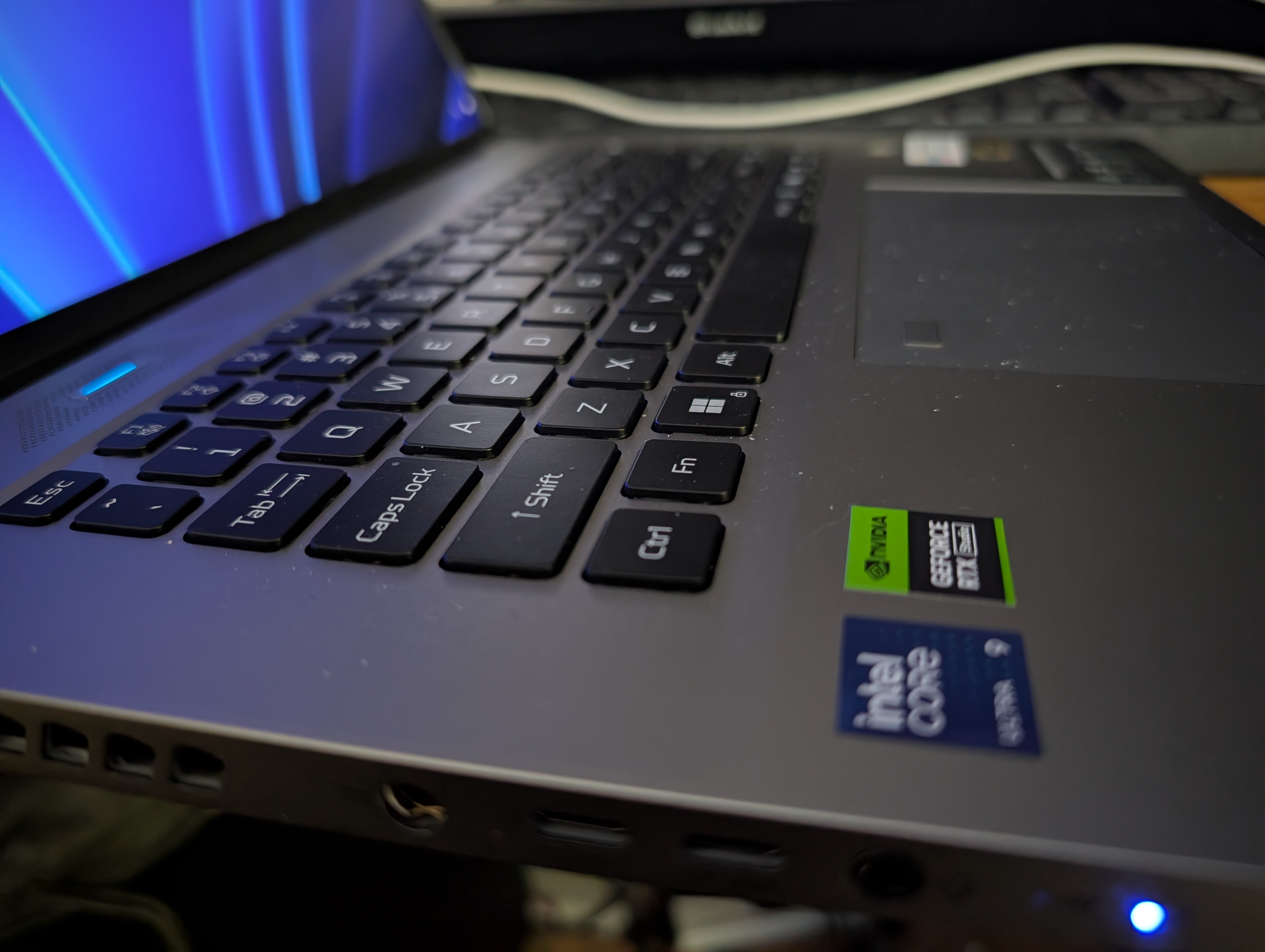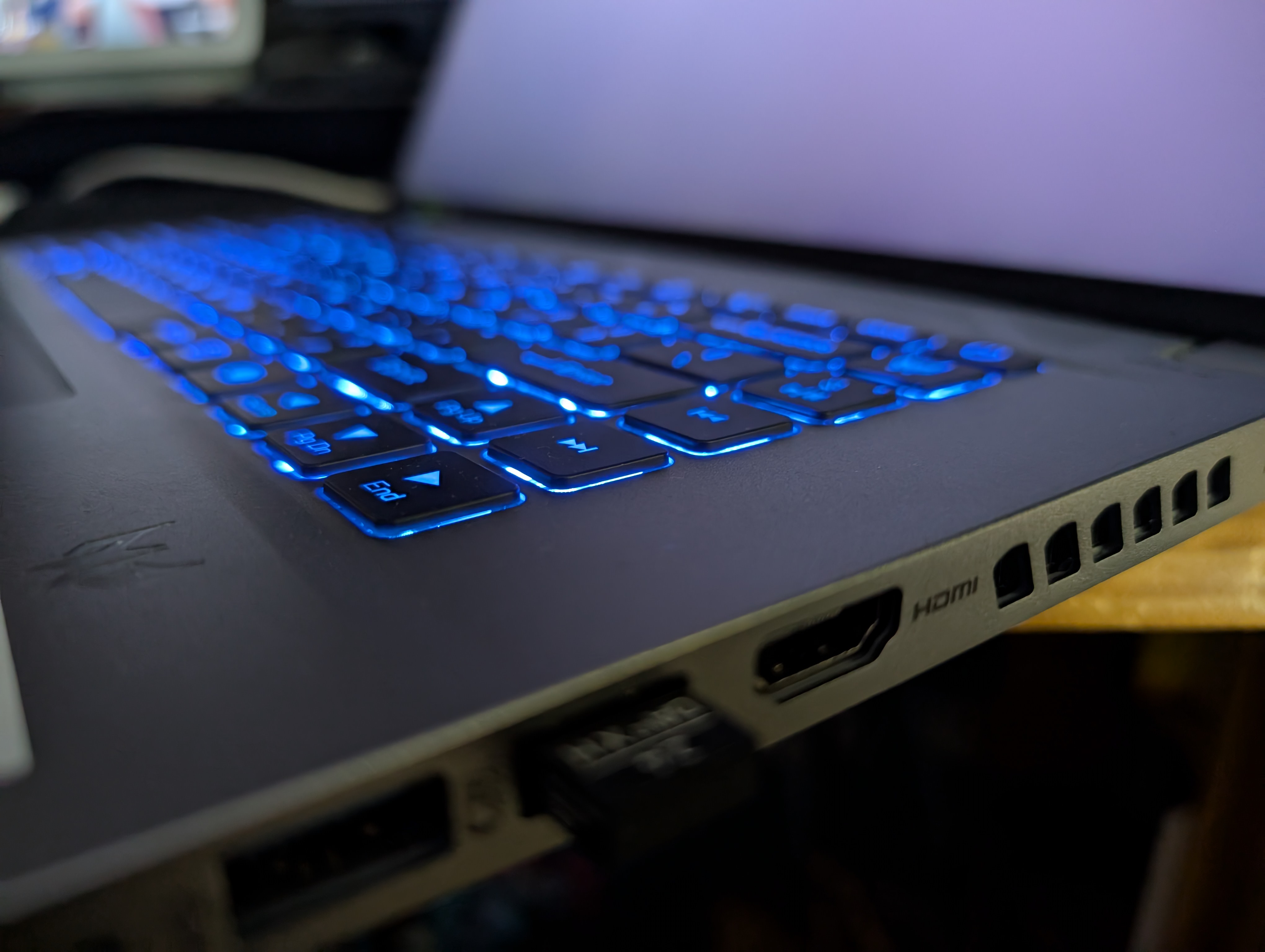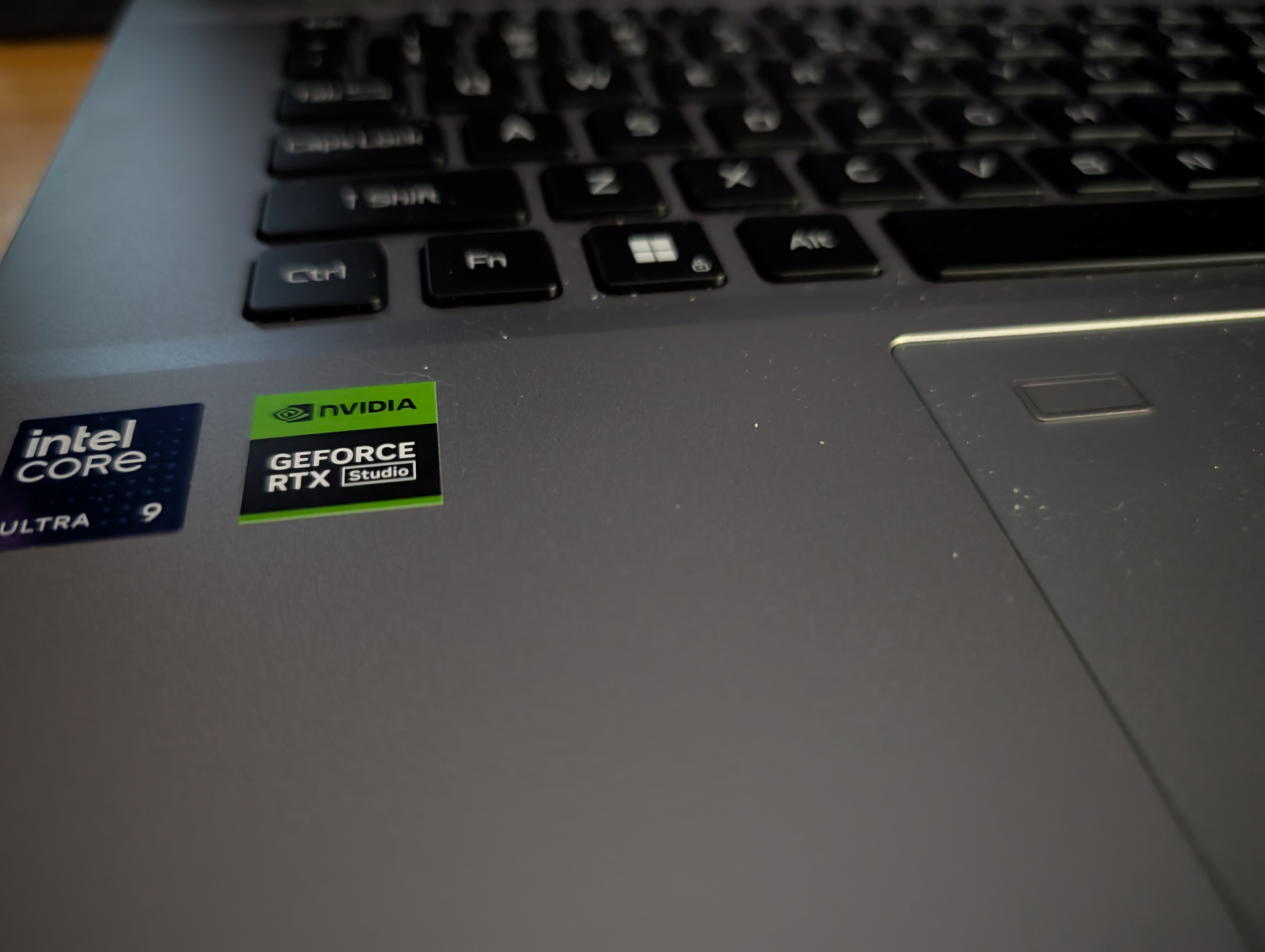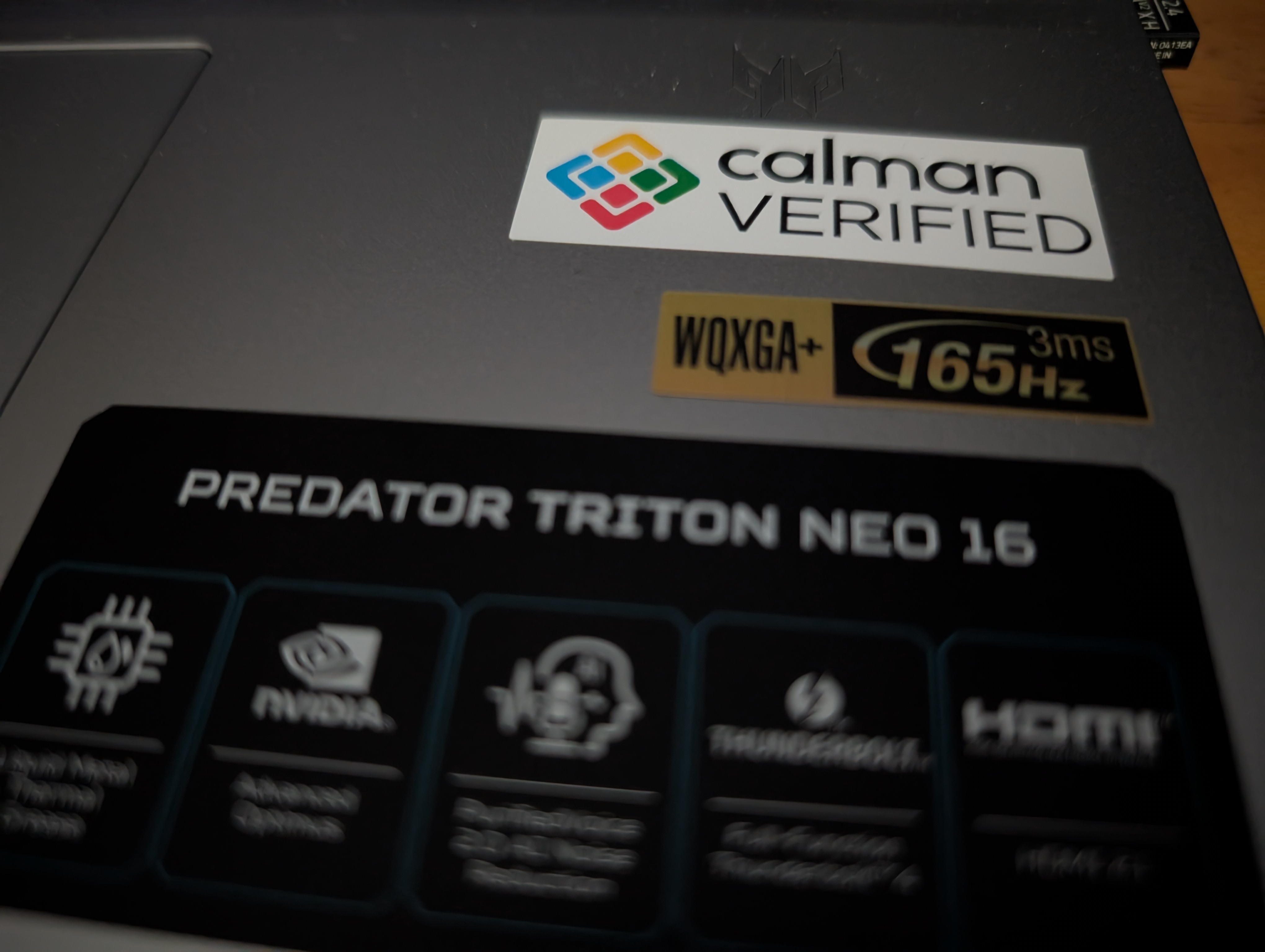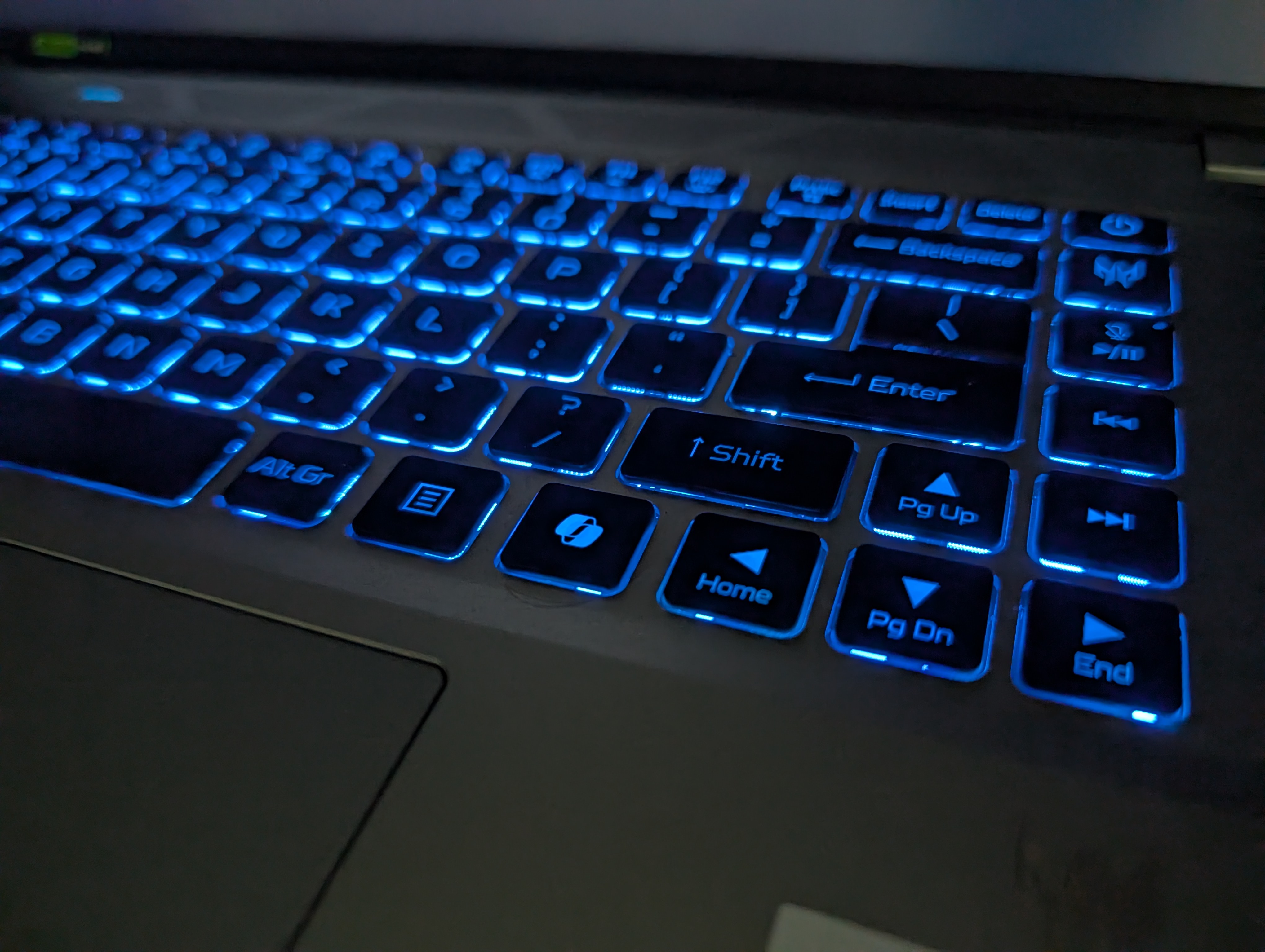Last year, we took a look at a predecessor of this unit and over the last month, I’ve had the Acer Predator Triton Neo 16 on my desk as a workhorse and gaming machine. I’ll perhaps start with something of an apology, because this has been a genuinely positive experience and this review, will perhaps come across as a bit of a love letter to Acer.
I’ll preface anything further with the fact that the review unit is being returned, and this review is not sponsored in any way – this is simply an account of my experience as a user.
The hardware: Specs and impressions
They say that first impressions last, and the Predator Triton Neo 16 makes a very good first impression. The hardware looks slick, clean and professional enough for work; with the hidden secret that it’s very capable of being your center of gaming too.
The Acer Predator Triton Neo 16 is a versatile laptop designed to cater to both gamers and content creators. It features a sleek silver aluminium chassis that weighs approximately 2 kilograms and measures 0.74 inches in thickness, making it relatively portable for its performance capabilities.
At its core, the Triton Neo 16 is powered by an Intel Core Ultra 9 185H processor, with 16 cores and 22 threads, providing exceptional multitasking and processing performance. This is complemented by 32GB of LPDDR5X memory running at 6400MHz, which makes everything smooth during intensive tasks.
Graphics are handled by the NVIDIA GeForce RTX 4060 GPU with 8GB of dedicated memory, offering solid performance for both gaming and creative applications. The laptop’s 16-inch IPS display supports a resolution of 2560×1600 pixels with a 16:10 aspect ratio, a 240Hz refresh rate, and 100% DCI-P3 colour gamut coverage, delivering vibrant and accurate visuals.
For storage, the Triton Neo 16 includes a 1TB NVMe solid-state drive, providing fast data access and ample space for applications and files. Connectivity options are comprehensive, featuring Killer Wi-Fi 6E AX1675i, Bluetooth 5.3, two USB-C (Thunderbolt) ports, two USB-A ports, an HDMI port, a microSD card reader, and a combo audio jack.
Additional features include a backlit keyboard with three-zone RGB lighting, a large touchpad with an embedded fingerprint sensor, and a 76Wh lithium-ion battery. The laptop also comes equipped with a Full HD webcam and built-in microphones, suitable for video conferencing and content creation.
The screen is stunning
For years now, I’ve been pushing friends and family to get the best screen that they can afford at the time. There’s several reasons for this, starting with the fact that they typically have a better longevity, but perhaps more importantly; they are easier on your eyes with higher resolution and refresh rates. This one runs — as earlier mentioned — at 2560 x 1600 in a 16:10 ratio and 240Hz refresh which delivers a really easy on the eyes experience for the user, even if you’re trying to cram a lot of
The refresh rate also makes gaming easier with almost no detectable motion blur (the smearing effect you get on low refresh rate monitors when the action is fast moving) even in the middle of a frantic firefight.
I also really enjoyed playing some live music videos and watching sports in 4K: the colour reproduction and image quality on the screen is gorgeous, giving a great viewing experience.
The audio is good, but for gaming I still recommend headphones
It’s difficult to be really fair to a gaming laptop and the audio it can produce because I’m used to my desktop rig, with great sound. In comparison to other laptops I’ve used, including my daily driver (a 2024 Macbook Air) the sound is excellent, but it’s not what I want for gaming; I need to hear and feel the game a bit. It’s important to have sound balance and direction which — the direction — I just don’t get from the speakers on the Predator Triton.
There’s plenty of volume and it is reasonably well balanced for laptop speakers, but lacks bass. The other thing lacking is sound field, yes, you do get some directional variance; for gaming it’s just not enough and leaves you at a disadvantage over your enemies.
Gaming performance and user experience
Unfortunately due to some time constraints, I didn’t have as much time
I’ve already mentioned the screen and it really is stunning, great resolution and refresh rate with enough processing power behind it to deliver liquid smooth visuals even in the heat of battle. The quality and fluidity of the screen was not just welcome in gaming, but it meant that my eye fatigue — I’m old, give me a break — was reduced a lot too.
Because I’ve already covered it, and anyone who is focused on gaming will have a decent headset to complement the experience; I’m going to ignore the sound and move into the visuals and interaction with the machine. The other factor that played into needing a quality headset was the fan noise from the unit when you’re really giving it a hard time. It was clearly audible from the other end of the house, and intrusive to the onboard audio if you didn’t have it up quite loud.
Final thoughts
I’ve done my best to be even handed across this review; noting that I’m fully aware that gaming is an accessory sport, and a headset is a necessity if you’re going to be using this as your primary gaming device. Moving past that issue I had with the sound, the machine is an absolute beast.
- The performance is genuinely excellent
- The screen is gorgeous
- There’s plenty of connectivity
Overall, the Acer Predator Triton Neo 16 offers a balanced blend of performance, portability, and visual quality, making it a compelling choice for users seeking a laptop capable of handling both gaming and creative workloads.
You can take a closer look at the usual bricks and mortar stores, or if you’re happy buying online; through Acer online for $3,898.00 at the time of publishing this review.


